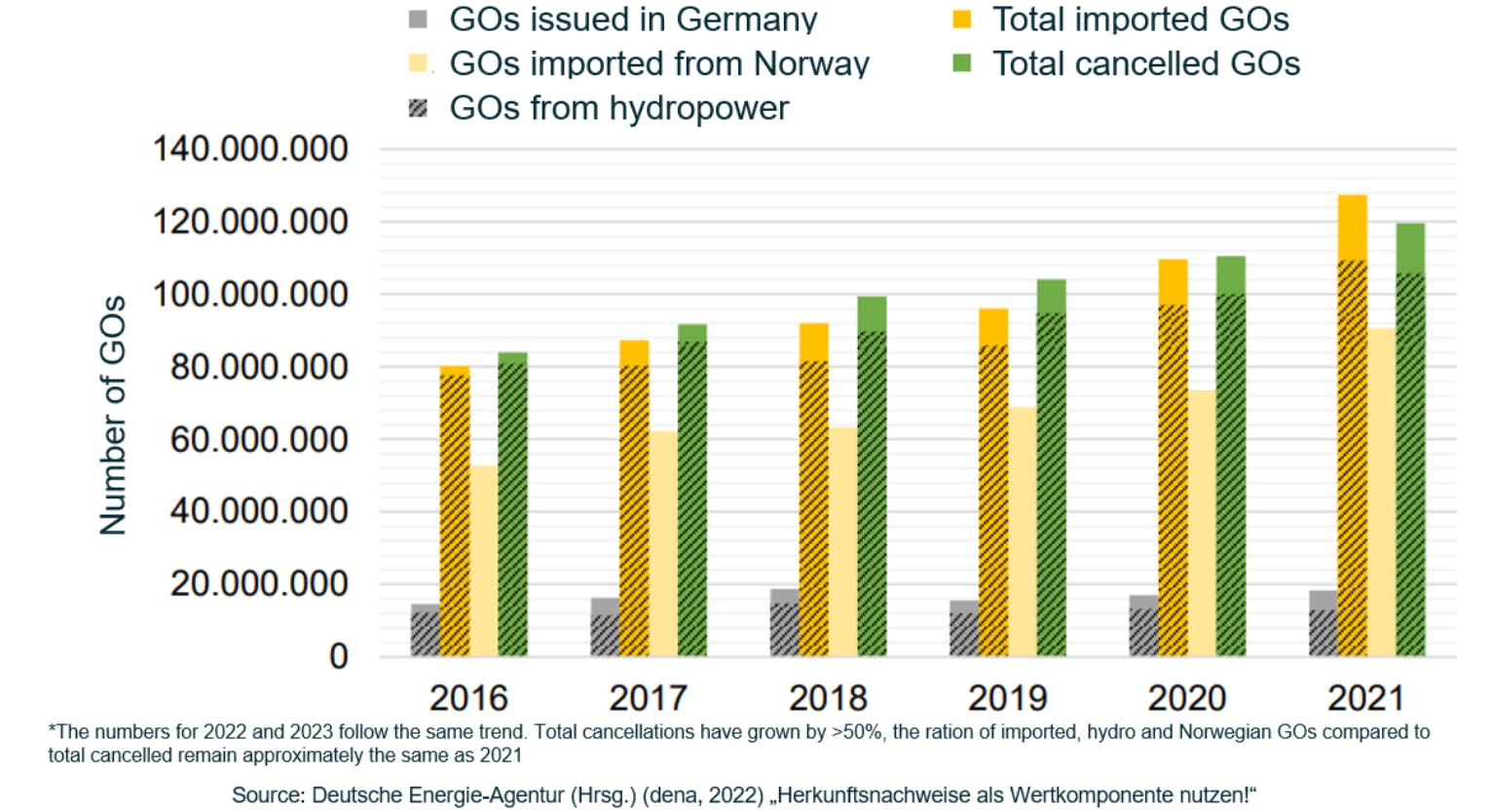Insight — 17 June 2024
Opportunities and Limitations: the State of Guarantees of Origin in Germany
Pal Habsburg has been leading our market in development in Germany. He recently had the opportunity to delve into the intricacies of the German Guarantees of Origin (GO/HKN) market on the Energiezone Podcast with host Ilan Momber. In this post, he summarises the key points from the discussion, exploring how Granular Energy addresses specific market needs, ensuring that every kilowatt-hour of green energy is tracked, verified, and truly renewable, aligning with our commitment to a sustainable future.

Read the German version of the blog here, and listen to the podcast (German only).
The green energy sector in Germany
With 515 TWh of electricity consumption, Germany is the largest power market in the EU. Last year 55% of its generation came from renewable sources. This achievement is particularly impressive considering Germany started phasing out nuclear generation in 2011 and shut down its final reactor in April 2023. Carbon-free technologies have successfully filled the gap and more. The country has over 31% wind generation, 12% solar, 8% biomass, and 3% from hydro and other sources.
While renewable generation in Germany is progressing strongly, the GOs (or Herkunftsnachweise as they are known locally) face regulatory challenges. These certificates are the only legal mechanism by which consumers can claim to have used green energy. For every unit of energy generated and fed into the grid, a certificate is created. By selling these certificates to a consumer along with the power, energy suppliers can prove that they have supplied renewable energy. GOs are the mechanism by which energy consumers can do their carbon accounting within the GHG Protocol framework.
Regulatory challenges for guarantees of origins
Germany’s “Doppelvermarktungsverbot” law (literally: “double sale ban”) states that renewable generation assets receiving subsidies are not eligible for GOs. The rationale behind this ban is to prevent asset owners from profiting twice from a subsidy: once directly and once through the sale of the generated GOs. Since the earnings from the subsidy currently outweigh the potential gains from GO sales, very few asset owners decide to enter the GOs system.
Despite approximately 250 TWh of green generation, only 37 TWh of GOs were issued in 2023. On the other hand, German energy consumers claimed 185 TWh worth of GO certificates. How is this possible? About 75% of the GOs claimed in Germany come from Norway as the GO market has wide boundaries. This far exceede what can be physically transported by the grid, seriously questioning the precision and boundaries of the GO system.

Lifting the Doppeltvermarktungsverbot would lead to a higher availability of local GOs and lower dependence on imports. More importantly it would enable suppliers to create local energy tariffs, and incentivise the development of renewable energy in areas where they are scarce.
What does “Green Energy” actually mean? GOs’ transparency problem
There is a common misunderstanding of what ‘100% green energy’ means. Private and business consumers alike often believe their green energy comes from a nearby wind farm. When it comes to energy accounting, it depends on what certificate they hold, which is likely a Norwegian GO.
In addition to the geographical mismatch, GOs do not contain a timestamp indicating when the energy was generated. Today when you buy a certificate, you can claim green electricity at any time of the year, regardless of when the electricity was produced or consumed. ‘Green electricity’ consumed in November can be matched with certificates from a hydro asset 2,000 km north, generated in January. This example scenario is possible given January typically sees high hydropower production so cheaper GO prices.
Adding a timestamp to the GO, and reducing the accounting period from one year to an hour will align certificates more with physical reality. The change does not necessarily have to happen all in one step either: Switzerland is changing from annual to quarterly matching in 2027. Every step towards shorter accounting periods increases the trust of consumers in the certificates.
Granular Energy improves temporal and geographical matching
As energy consumers become increasingly aware of the greenwashing allegations regarding annual GOs and their excessive import, they demand more transparency on where their energy comes from. On top of that, there are state subsidies such as the Strompreiskompensation, which require GOs to be matched on a sub-annual level that are gaining more traction.
Granular Energy helps energy suppliers match energy generation to consumption with more precise geographical and temporal criteria. We also automate the management of GOs to fulfill requirements for the Strompreiskompensation, as well as certifications such as TÜV Nord 1304, TÜV Süd EE01/EE02, ok-power, or any individual contractual obligations.

By providing this transparency, energy suppliers play a crucial role in promoting investment in assets that generate renewable energy when and where it is consumed. This alignment not only enhances the integrity of green energy claims but also drives the development of more sustainable and locally-sourced renewable energy solutions.
Spatial and temporal matching offers many system level benefits. Alongside the transmission system operator 50Hertz, the dena and other stakeholders including the HKN, we’re working on a project for traceable energy supply and granular certificates. Following a successful initial testing period, 50Hertz and Granular Energy are launching the second phase of the project to demonstrate the use of ‘hourly-HKN’ that provides transparency on the hourly origin of electricity.
If you want to reach out concerning the demonstration project or have any other questions about granular certificates in Germany, reach out to pal.habsburg@granular-energy.com .
Share article